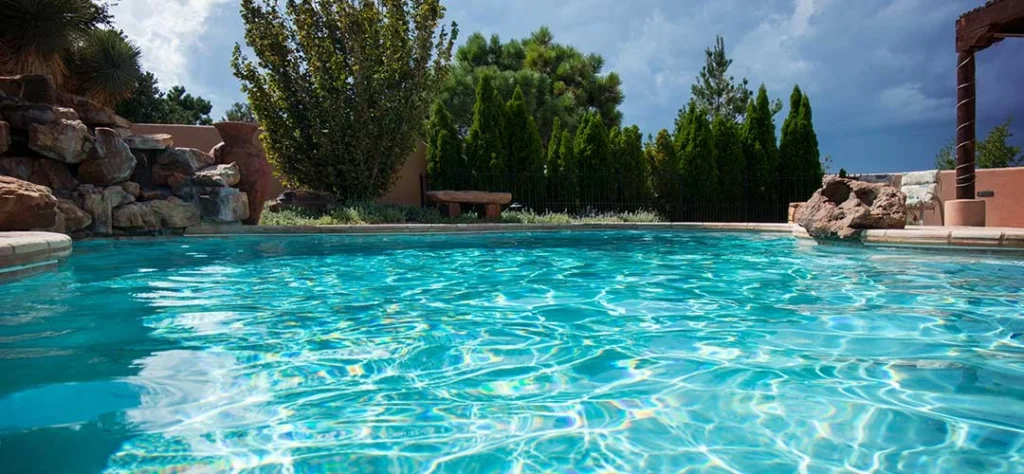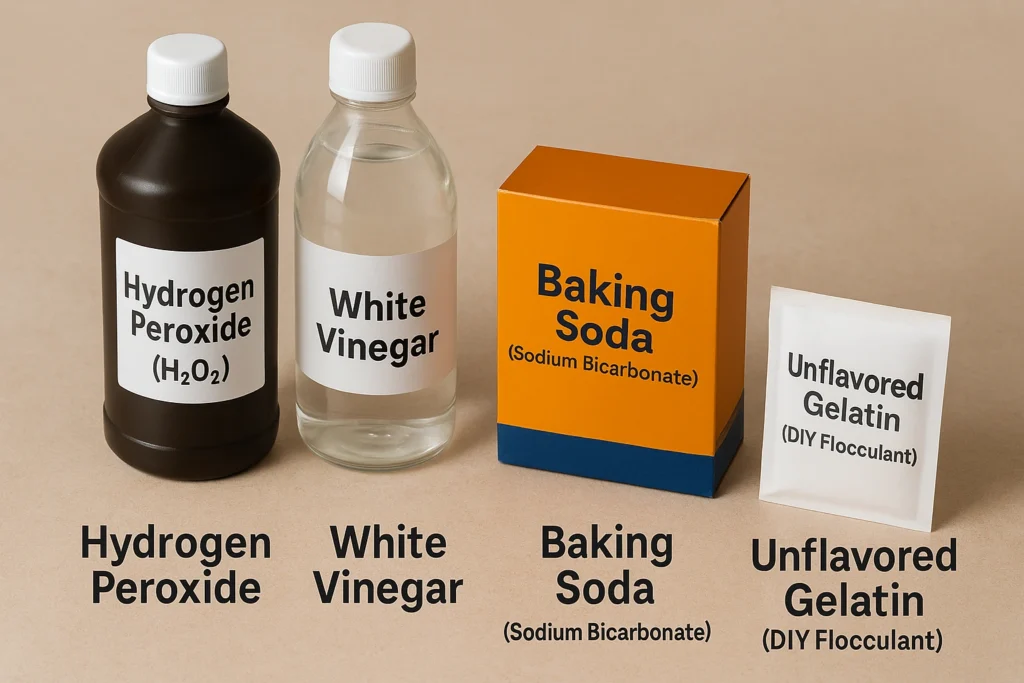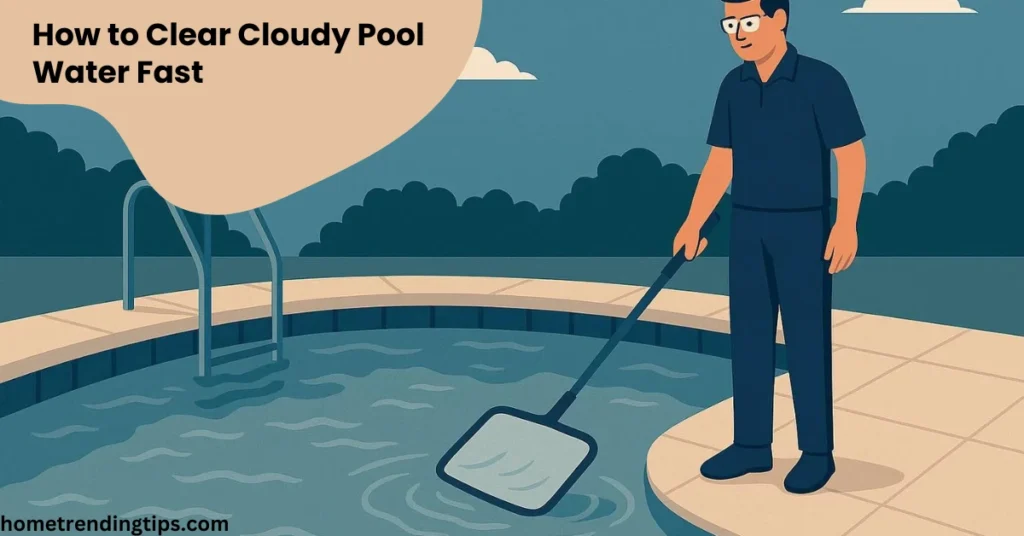Cloudy pool water is a frustrating but common issue faced by many pool owners—especially during the warmer months. Whether caused by poor filtration, unbalanced chemicals, or environmental debris, murky water can quickly turn a sparkling pool into an uninviting mess. In this article, we’ll explore how to clear cloudy pool water fast using home remedies, along with expert tips for identifying the cause, fixing it quickly, and preventing it from happening again.
Why Is Your Pool Water Cloudy?
Cloudiness in pool water occurs when fine particles—such as dirt, pollen, algae, body oils, or unbalanced chemicals—remain suspended instead of being filtered out. These particles scatter and reflect light, making the water appear dull, hazy, or even milky. This not only affects the visual appeal but may also signal underlying water quality issues. Understanding the root cause of the cloudiness is essential, as it guides you to the most effective and quickest solution to restore your pool’s clarity.
Common Causes:
- Inefficient Filtration or Irregular Pump Operation – A clogged or underperforming filter can leave particles suspended in the water, reducing clarity.
- Insufficient Chlorine or Sanitizer Levels – Low sanitizer levels allow bacteria and algae to thrive, clouding the pool quickly.
- Chemical Imbalances – Improper pH, alkalinity, or calcium hardness can disrupt water stability and reduce the effectiveness of sanitizers.
- Algae Blooms or Bacterial Contamination – When chlorine levels drop, algae and harmful bacteria can multiply and turn the water cloudy.
- Environmental Contaminants – Organic materials like leaves, pollen, sunscreen, body oils, and even rainwater introduce unwanted particles and nutrients.
Step-by-Step: How to Fix a Cloudy Pool Fast at Home

If you’re wondering how to clear cloudy pool water fast using home remedies, follow these proven steps:
1. Check and Clean the Filtration System
Your filter is your pool’s first line of defense against cloudy water.
- Cartridge Filter: Remove, hose down thoroughly, and soak in filter cleaner if needed. Replace every 2 years.
- Sand Filter: Backwash until water runs clear in the sight glass. Do this every 2-4 weeks.
- Run the Pump: Let your filter run 8–12 hours per day (24/7 if water is severely cloudy).
2. Brush, Skim, and Vacuum the Pool
Physically removing debris improves water circulation and helps the filter catch more contaminants.
- Skim leaves and debris from the surface and bottom.
- Brush pool walls and floor to dislodge dirt, algae, or buildup.
- Vacuum the pool (manually or with an automatic cleaner).
Home Remedies to Clear Cloudy Pool Water Fast

Skip expensive chemical kits and try these effective home-based cloudy pool water fixes:
1. Hydrogen Peroxide: A Natural Oxidizer for Organic Contaminants
Hydrogen peroxide (3%) is a powerful yet gentle oxidizing agent that works similarly to chlorine by breaking down organic matter, such as bacteria, algae spores, and body oils.
- How to Use: Add 1 liter of 3% hydrogen peroxide per 3,000 liters (approximately 800 gallons) of pool water.
- How It Works: It reacts with contaminants, oxidizing them into harmless compounds and aiding the filtration process.
- Pro Tip: Distribute the peroxide evenly around the pool’s perimeter and run the filtration system continuously for at least 24 hours.
- Best For: Organic-based cloudiness or when chlorine levels are low and you need a quick, gentle alternative.
Hydrogen peroxide is especially useful after heavy use or storms when organic debris overwhelms your pool.
2. White Vinegar: Gentle pH Balancer
Cloudy water can sometimes be the result of an unbalanced pH level—specifically, water that is too alkaline. White vinegar offers a mild acid solution to this problem, especially when you’re aiming to avoid synthetic pH decreasers.
- How to Use: Add 4 liters of plain white vinegar per 25,000 liters (roughly 6,600 gallons) of pool water.
- How It Works: The acetic acid in vinegar gently lowers the pH level, bringing it into the optimal range of 7.2 to 7.6, where chlorine and other sanitizers work best.
- Application Tip: Pour the vinegar into the pool while the pump is running to ensure even circulation.
- Ideal For: Small or moderate pH corrections due to minor chemical imbalances.
Not only does vinegar clarify water by helping chemicals do their job, but it’s also non-toxic and safe for swimmers.
3. Baking Soda (Sodium Bicarbonate): Stabilize Alkalinity
If your pool water feels unstable and your pH fluctuates often, low total alkalinity may be the hidden issue. Baking soda is a reliable home remedy that raises alkalinity while having a mild effect on pH.
- How to Use: Add 1.5 kg of baking soda per 50,000 liters (13,200 gallons) of water to increase alkalinity by approximately 10 ppm (parts per million).
- Application Tip: Spread it slowly across the surface of the pool and keep the filter running for 12–24 hours to fully distribute and dissolve.
- Why It Works: Proper alkalinity helps buffer pH levels, allowing sanitizers like chlorine to work more efficiently, thereby reducing cloudiness.
- When to Use: When pool testing shows alkalinity below the recommended 100–200 ppm range.
Baking soda is one of the safest, most cost-effective tools in your pool maintenance arsenal.
4. Unflavored Gelatin: A Natural DIY Flocculant
If you need a quick fix for extremely cloudy pool water—especially when particles are too fine for the filter—unflavored gelatin can serve as a natural flocculant.
- Preparation: Dissolve one packet of unflavored gelatin in a cup of hot water until fully liquified.
- How to Use: Pour the mixture directly into the pool water while the filter is running.
- What It Does: Gelatin binds tiny suspended particles together, forming larger clumps that can then be filtered out or vacuumed from the pool floor.
- Result: Within 12 hours, you should notice improved clarity. For best results, manually vacuum settled debris from the bottom of the pool.
This method is particularly helpful after heavy storms or high swimmer loads, when debris overwhelms your usual filtration system.
How to Clarify Pool Water with Basic Adjustments
Sometimes, all your pool needs is a few chemical tweaks to regain its sparkle. Balancing chlorine, pH, alkalinity, and calcium levels is key to restoring clarity.
Adjust Chlorine and Sanitizer Levels
- Aim for 2–3 ppm free chlorine.
- Shock the pool at night if chlorine is low.
- Use stabilized chlorine or cyanuric acid to prevent rapid UV degradation.
Balance pH, Alkalinity, and Calcium Hardness
- pH: Ideal range is 7.2–7.6. Use vinegar or pool acid to lower if too high.
- Alkalinity: 100–200 ppm keeps pH stable.
- Calcium Hardness: 200–400 ppm for concrete pools; 100–250 ppm for vinyl/fiberglass.
Environmental Solutions: Keep the Outside Out
External factors like leaves, dust, and body products can cloud your pool faster than you think. Simple outdoor precautions can go a long way in maintaining crystal-clear water.
Remove Debris Promptly
Regular debris removal is essential for preventing cloudiness caused by organic matter breaking down in the water.
- Clean out skimmer and pump baskets daily, especially after storms or heavy winds. Clogged baskets reduce circulation and strain your filtration system.
- Use a fine mesh leaf skimmer to collect floating leaves, insects, and surface pollen before they sink and decompose.
- Brush pool walls and vacuum the floor weekly to prevent buildup in less-visible areas.
Cover Your Pool
A pool cover is one of the most effective tools for protecting water clarity.
- Use a fitted cover or solar blanket to shield your pool from falling leaves, dust, rainwater, and UV exposure, which can degrade chlorine.
- In colder months, a winter cover will reduce maintenance and chemical use during the off-season.
- Bonus tip: Covers also reduce evaporation and save water and energy.
Control Swimmer Contaminants
Swimmers unknowingly introduce a variety of pollutants into your pool water.
- Encourage a quick rinse under a shower before entering the pool to wash off sweat, body oils, makeup, and sunscreen.
- Avoid entering the pool with excessive lotions, cosmetics, or hair products, which can react with chlorine and create cloudiness.
- Limit food and drink near the pool area to reduce accidental spills and debris.
Together, these environmental solutions can drastically cut down on the causes of cloudy water, extending the time between major cleanings and chemical adjustments.
How Long Does It Take to Clear a Cloudy Pool?
- Mild cloudiness: 12–24 hours with clarifier or vinegar
- Moderate cloudiness: 1–3 days with adjusted chemicals and full pump cycles
- Severe cloudiness: 3–5 days, especially if using flocculant
Pro Tip: Cloudiness after shocking is normal. Keep filtering and it should resolve within a day.
Is It Safe to Swim in a Cloudy Pool?
No, it’s not recommended. Here’s why:
- Visibility Risk: Murky water obscures the pool floor, increasing the risk of accidents.
- Health Concerns: Bacteria, algae, or contaminants may be present and can cause skin, eye, or digestive issues.
Wait until your water is crystal clear before diving in.
How to Prevent Cloudy Pool Water
The best fix is prevention. Here’s your checklist:
- Run your filter daily (8–12 hours in summer)
- Test water weekly and adjust pH/chlorine promptly
- Backwash sand filters and clean cartridges regularly
- Use a pool cover and clean debris often
- Rinse off before swimming
- Shock your pool after heavy use or storms
FAQs: How to Clear Cloudy Pool Water Fast Home Remedies
1. What can I put in my pool to make it clear fast?
Hydrogen peroxide, baking soda, and pool clarifiers work quickly. Run your filter continuously and brush the pool to speed up results.
2. How can I get rid of cloudy pool water without chemicals?
Try natural options like white vinegar to lower pH, baking soda to raise alkalinity, and gelatin as a flocculant. Keep the filter running and clean.
3. How do I know if my cloudy pool water is caused by algae?
If the water has a green or yellowish tint and feels slimy, it’s likely algae. Brush thoroughly and use hydrogen peroxide or chlorine shock.
4. Can I swim in a cloudy pool while fixing it?
It’s best to avoid swimming until the cloudiness clears. Poor visibility and bacteria growth can make it unsafe.
5. What’s the best way to prevent cloudy pool water?
Maintain weekly chemical balance, clean filters, and use a cover. Prevention is faster and easier than cleanup.
Final Thoughts
Clearing cloudy pool water doesn’t always require expensive chemicals. With the right home remedies, proper filtration, and basic water chemistry knowledge, you can restore clarity quickly and naturally. Whether you’re troubleshooting how to fix cloudy pool water, maintain clean water after a party, or searching for a cloudy pool water fix without harsh treatments, these simple solutions will help you enjoy a sparkling, safe swim.
Disclaimer
Content on Home Trending Tips is for informational purposes only. Please consult professionals before making home or garden decisions.



